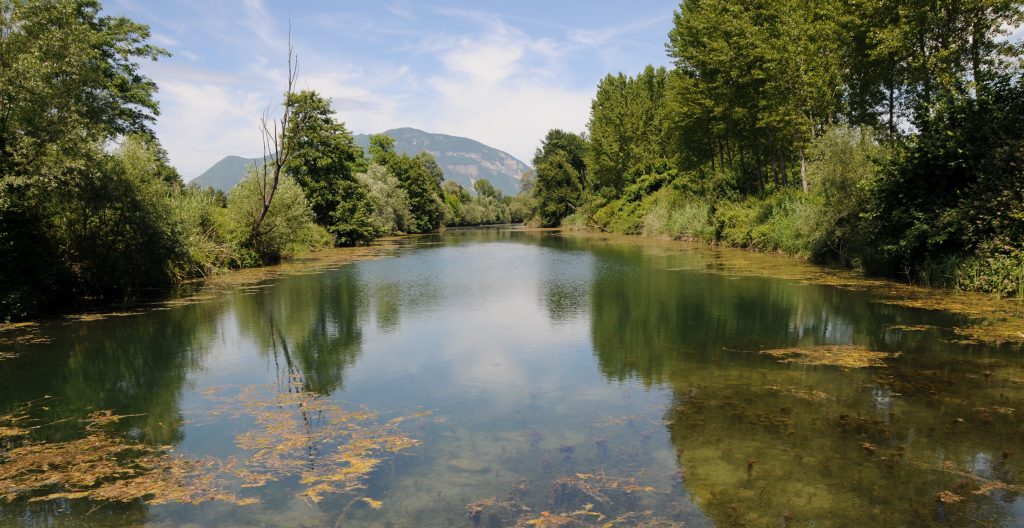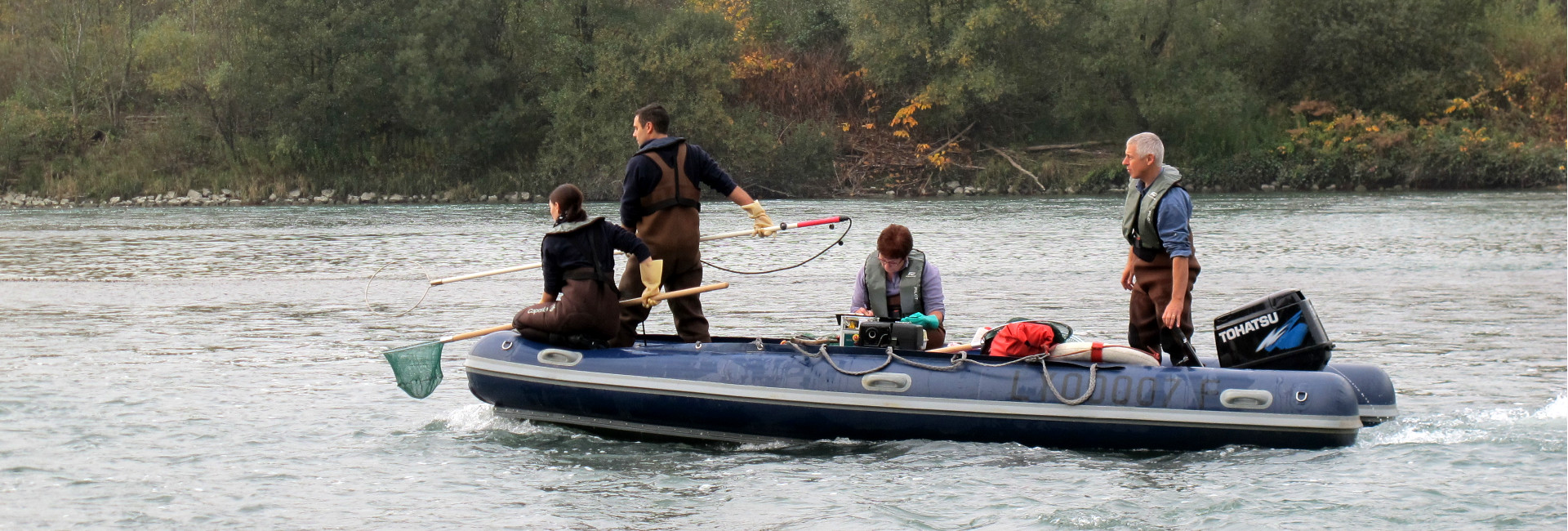The RhônEco scientific observatory has been supporting the river restoration program since the late 1990s. This is a long-term programme aimed at assessing and modelling the effects of restoration on the river’s hydrosystem. It helps to define the river’s ecological potential and to manage the ecosystem.
The monitoring carried out in RhônEco focuses more specifically on the effects of 1) increasing reserved flows in the short-circuited Rhône; 2) hydromorphological rehabilitation of the lônes; 3) dismantling of alluvial margins; 4) sediment reinjection into the minor bed.
The program is based on a detailed description of the physical characteristics of the restored environments (flow rates, sediments, temperature, exposure to pollutants, etc.) and biological communities (fish, macroinvertebrates, aquatic vegetation and riparian vegetation, etc.). Among other things, it is studying changes in habitats linked to an increase in instream flows, changes in hydrological connectivity and sedimentation processes in rehabilitated canals. Above all, RhônEco is analysing the links between these changes and those observed in biodiversity and species life cycles. The aim is also to link the biological observations to the fundamental processes of the hydrosystem (through productivity, the carbon cycle, etc.), the maintenance and optimisation of which is one of the challenges of restoration.
The program is structured around five applied research focuses:
Methodology
The programme is based on a detailed description of the physical characteristics of the restored environments (flow rates, sediments, temperature, exposure to pollutants, etc.) and the biological communities (fish, macroinvertebrates, aquatic vegetation and riverbanks, etc.). Among other things, it is studying changes in habitats linked to an increase in instream flows, changes in hydrological connectivity and sedimentation processes in rehabilitated canals. Above all, RhônEco is analysing the links between these changes and those observed in biodiversity and species life cycles. The aim is also to link the biological observations to the fundamental processes of the hydrosystem (through productivity, the carbon cycle, etc.), the maintenance and optimisation of which is one of the challenges of restoration.
The aim is also to test new approaches for assessing the effects of restoration, for example by testing biodiversity monitoring based on the DNA of organisms or by studying ecological processes (decomposition of organic matter, ecosystem metabolism, carbon emissions, etc.) in the restored Rhône.
The RhônEco observatory is now being set up on a river-wide scale, covering more than 500 km. It covers nine sectors developed between Switzerland and the Mediterranean (Chautagne, Belley, Brégnier-Cordon, Miribel, Pierre-Bénite, Péage-de-Roussillon, Baix-Logis-Neuf, Montélimar and Donzère-Mondragon).
The multi-site comparative approach developed by RhônEco is fundamental. It makes it possible to identify the effects of restoration in a context of multiple pressures and rapid global environmental change.

Data collected
The knowledge acquired makes it possible to assess the effectiveness of restoration actions in terms of the objectives set and to provide informed operational feedback.
The large amount of data collected is essential for developing valid scientific models, i.e. simplified representations of the river’s ecological functioning. These models make it possible to describe, but above all to predict, the effects of restoration on habitats and biodiversity (fish, macro-invertebrates, etc.). They are also used to assess the sustainability of restoration actions.
The analysis and modelling work is particularly useful both for adapting the work carried out and for developing new restoration strategies.
